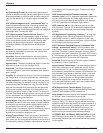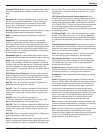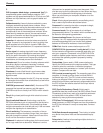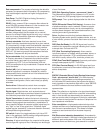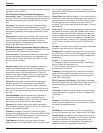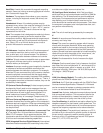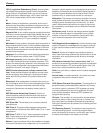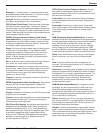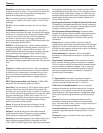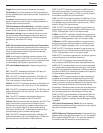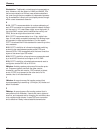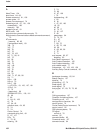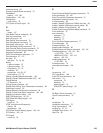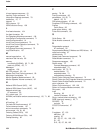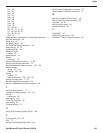
178 MultiModem ISI Hybrid Series, ISIHI-2S
Glossary
Resolution: Indicates the number of dots that make up an
image on a screen or printer. The more dots, the higher the
resolution, and the finer and smoother the images can
appear when displayed at a given size.
RJ-11: An industry standard interface used for connecting a
telephone to a modular wall outlet; comes in 4-and 6-wire
packages.
RJ-45: An 8-wire modular connector for voice and data
circuits.
ROM (Read Only Memory): A memory chip that perma-
nently stores instructions and data. Its contents are created
at the time it is manufactured and cannot be altered. ROM
is used to store control routines in PCs and peripheral
controllers. It is also used in the plug-in cartridges for
printers and video games. A set of ROM chips contains the
basic input/output system (BIOS).
RS232-C: An EIA standard for a serial interface between
computers and peripheral devices (modem, mouse, etc.). It
uses a 25-pin DB-25, or a 9-pin DB-9 connector. The
RS232 standard defines the purposes, electrical character-
istics and timing of the signals for each of the 25 lines.
RTS (Request To Send signal): With communications
between modems, an RS232 signal sent from the DTE to
the modem requesting permission to transmit. Contrast with
CTS.
S
Scanner: A hardware device that can “read” a photograph
or other piece of artwork and transforms it into a collection
of dots that can be stored as a bit-mapped file on a hard
drive. It can then be manipulated into various software
programs and placed electronically in a page layout pro-
gram.
SDLC (Synchronous Data Link Control): In IBM’s SNA
networks, this is the primary data link protocol.
Serial Port: The connector on a PC used to attach a serial
device (a device that needs to receive data one bit after
another), such as a mouse, printer or modem. It consists of
a 9- or 25-pin connector that sends data in sequence. Serial
ports are referred to as “COMx” ports, where x is 1 to 4
(COM1 through COM4). A serial port contains a conversion
chip called a UART, which translates between internal
parallel and external serial formats.
Server: A computer that provides disk space, printer
access, or other shared services, to computers over a
network.
Software: The set of instructions that make computer
hardware perform tasks. Programs, operating systems,
device drivers and applications are all software.
Spoofing: A command recognized by modems which have
been manufactured specifically for use within the UNIX
UUCP (UNIX to UNIX Copy) facility. Spoofing is the process
of transparently disabling the “g” protocol used by UUCP
and substituting the modem’s own error correction protocol
for data integrity. The process “spoofs” the UNIX host into
transmitting data faster than normal, because the acknowl-
edgments are actually sent by the modem instead of the
remote UNIX computer.
Spooling (Simultaneous Peripheral Operations On-line):
Overlapping a low-speed operation with normal processing,
such as printing a file or document in the background while
creating a new document in the foreground.
SPX (Sequenced Packet Exchange): A data transport
protocol developed by Novell used for interprocess commu-
nications. It guarantees that an entire message arrives
intact and uses the NetWare IPX protocol as its delivery
mechanism.
Switch Line: In communications, a physical channel
established by dynamically connecting one or more discreet
segments. This connection lasts for the duration of the call
after which each segment may be used as part of a different
channel. Contrast with leased line.
Switched Network: A network in which a temporary
connection is established from one point via one or more
segments.
Synchronous Transmission: The transmission of data,
which involves sending a group of characters in a packet.
This is a common method of transmission between comput-
ers on a network or between modems. One or more syn-
chronous characters are transmitted to confirm clocking
before each packet of data is transmitted. Compare to
Asynchronous Transmission.
T
T1 Transmission: A standard transmission speed of
1.544M bps that may be used in its full bandwidth, or as
narrower channels called “fractional T1” carriers.
TCM (Trellis Coded Modulation): An error correction
method that allows the receiving modem to tell if a signal
element is in error, based on the value of the preceding
signal elements. Each signal element is assigned a coded
binary value representing the element’s phase and ampli-
tude.
Terminal: The screen and keyboard device used in a
centralized computing environment for interactive data
entry. Terminals have no “box”, which is to say they have no
file storage or processing capabilities.
Terminal emulation: Allows a PC to access a mainframe
computer by generating and accepting data like a “dumb”
terminal.
Threshold: A value or condition which, when reached,
triggers an event.



